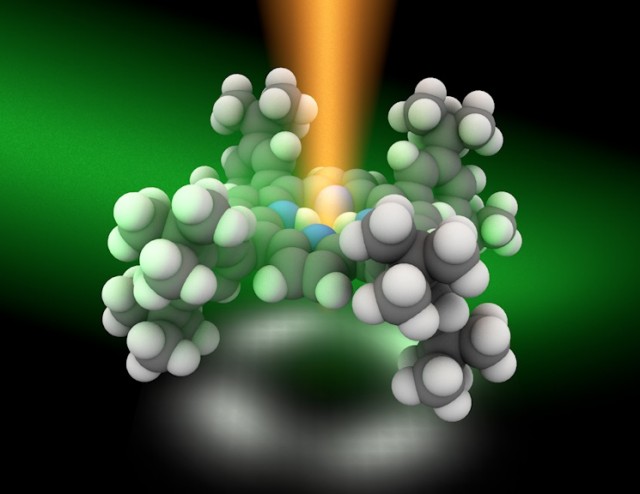New method can image single molecule, identify its atoms
Ars Technica » Scientific Method 2013-06-05

The ultimate dream of nanotechnology is to be able to manipulate matter atom-by-atom. To do that, we first need to know where to find the atoms. In what could be a major step in that direction, researchers have developed a method that can determine the shape of a single molecule and identify its constituent atoms.
Nature limits what can be seen with the help of light alone. Only objects separated by less than half the wavelength of the light that illuminates them can be observed. To overcome this limit, Edward Hutchinson Synge came up with an idea in 1928 of imaging things at an even finer scale. The idea was to shine light on a small particle and study the scattered light that reflected back, making the wavelength of incoming light irrelevant.
The realisation of Synge’s goal had to wait until the 1980s, when Heinrich Rohrer, the father of nanotechnology, developed a completely different technology: scanning tunnelling microscopy (STM). This method uses a special property of electric current called quantum tunnelling to achieve single-atom resolutions.
Read 11 remaining paragraphs | Comments